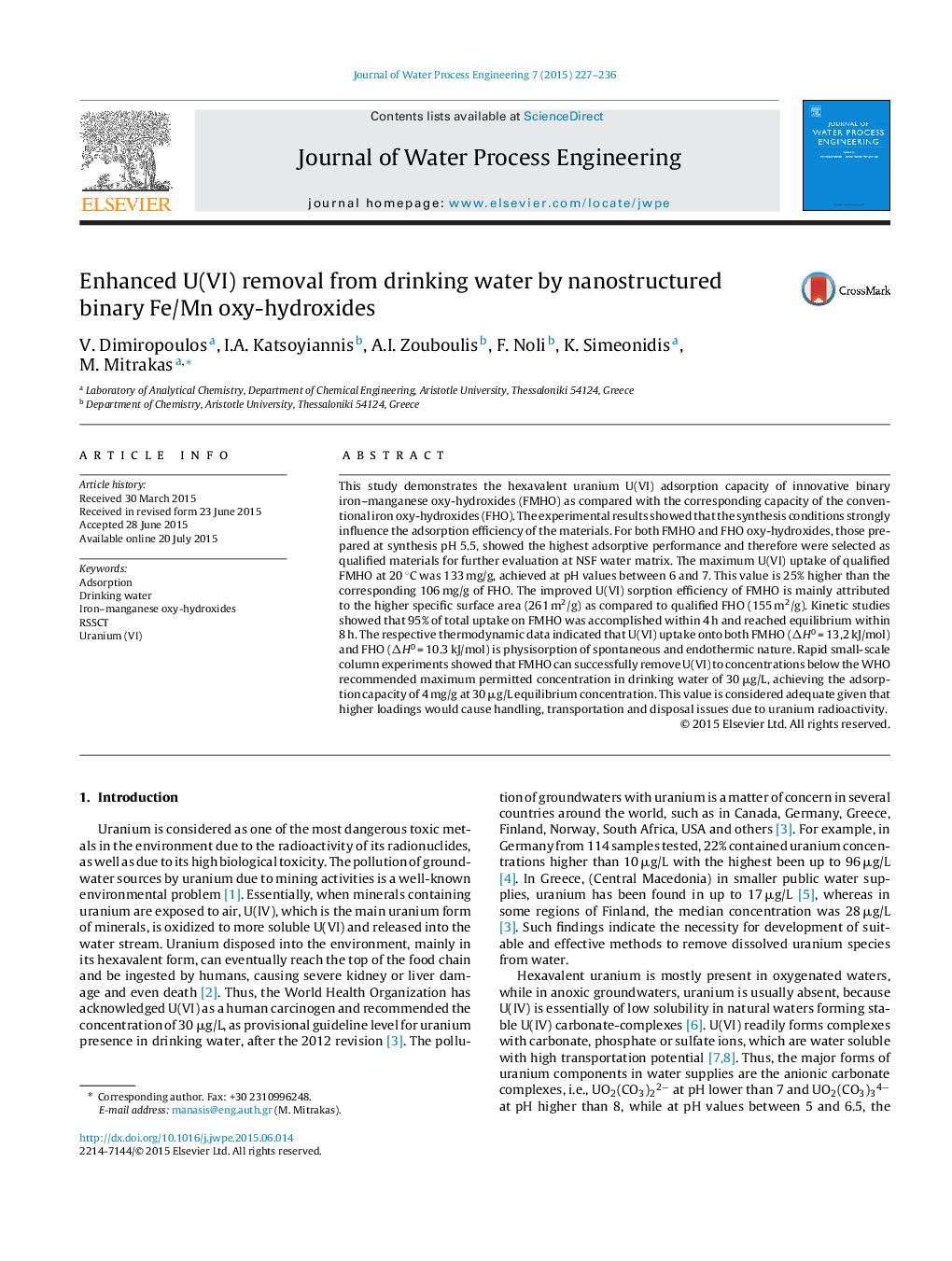| Article ID | Journal | Published Year | Pages | File Type |
|---|---|---|---|---|
| 232619 | Journal of Water Process Engineering | 2015 | 10 Pages |
This study demonstrates the hexavalent uranium U(VI) adsorption capacity of innovative binary iron–manganese oxy-hydroxides (FMHO) as compared with the corresponding capacity of the conventional iron oxy-hydroxides (FHO). The experimental results showed that the synthesis conditions strongly influence the adsorption efficiency of the materials. For both FMHO and FHO oxy-hydroxides, those prepared at synthesis pH 5.5, showed the highest adsorptive performance and therefore were selected as qualified materials for further evaluation at NSF water matrix. The maximum U(VI) uptake of qualified FMHO at 20 °C was 133 mg/g, achieved at pH values between 6 and 7. This value is 25% higher than the corresponding 106 mg/g of FHO. The improved U(VI) sorption efficiency of FMHO is mainly attributed to the higher specific surface area (261 m2/g) as compared to qualified FHO (155 m2/g). Kinetic studies showed that 95% of total uptake on FMHO was accomplished within 4 h and reached equilibrium within 8 h. The respective thermodynamic data indicated that U(VI) uptake onto both FMHO (ΔΗ0 = 13,2 kJ/mol) and FHO (ΔΗ0 = 10.3 kJ/mol) is physisorption of spontaneous and endothermic nature. Rapid small-scale column experiments showed that FMHO can successfully remove U(VI) to concentrations below the WHO recommended maximum permitted concentration in drinking water of 30 μg/L, achieving the adsorption capacity of 4 mg/g at 30 μg/L equilibrium concentration. This value is considered adequate given that higher loadings would cause handling, transportation and disposal issues due to uranium radioactivity.
